The Question
You write at the end:
As capacitance is dependent on plate area dielectric material and
distance, with two point wires in an open circuit the capacitance
simply becomes infinitesimally small but non-zero. If so what is it
about capacitors that the voltage can pass from left to right plate
but in an open circuit it can't. Is there some arbitrary capacitance
beyond which you see coupling in the real world, maybe?
Electronics operates at a model level that sits above where your question is at.
Your question is like asking why it is that 4 times 5 is 20. Most answers will form around the idea that adding up 4, 5 times, makes 20 or that adding up 5, 4 times, makes 20. None of the answers will dig deeper until you ask that question to a specialist of such questions, namely an abstract mathematician.
Electronics, at the level most try to gain it, assumes certain ideas into place. While they are true enough at the level needed, these devolve into circular arguments when you ask why they are what they are. Your question needs to be handled by a specialist of such questions, namely an experimental physicist.
So this really isn't the right place unless you are lucky enough to find one here. I'm not one. So anything I attempt to write will be built from ideas I believe I've acquired correctly, but may not have. Trust nothing I write, but if anything instead just use it to help you better shape your own questions.
A Thought Experiment
Suppose an experimental setup like this:
(Click it to make it larger.)
Here, there is a small machine on the right side where we've painted the surface of a small metal plate with a radioactive beta-emitter (emits electrons.) We've managed to design both small metal plates in some fashion (not shown) so that the emitted electrons are entirely absorbed by the plate opposing the painted one. The machine also includes a switch, which will be initially closed for a period of time long enough that the capacitor is charged up to some accelerating voltage.
(We assume for these purposes that the plates can be mysteriously held apart and either kept with a fixed separation or else adjusted so that the separation can be changed without losing their orientation. This assumption is needed for two reasons. The first is that an accelerating voltage between the plates may accelerate the plates towards each other and we need to prevent that. The second is that we need to be able to adjust their separation in this experimental process below.)
As these beta particles accumulate on the opposite surface inside our machine, they diffuse out into the non-radioactive plate. Because it is a metal in this thought experiment, all of the electric charge within the volume of the non-radioactive plate, the conductor leading through the closed switch, and the left plate of the capacitor will distribute itself as a unit (through repulsion) to be evenly distributed, except for a very tiny excess surface charge (because charges near the surface are not repelled equally from all directions, anymore.) So the surfaces of the left capacitor plate, the wire leading to it, the switch itself, and our non-radioactive plate in the machine will all carry a net negative surface charge that is related to this idea of an accelerating voltage.
Meanwhile, as the radioactive plate is losing beta particles, it is equally acquiring a net positive charge. And the same rules apply here, as well, so that the surfaces of the right capacitor plate, the wire to it, and the radioactive plate in the machine will all carry a net positive surface charge that is similarly related to this idea of an accelerating voltage.
We can measure this accelerating voltage, by adjusting the above experiment so that we can make observations of it. We can paint the surface of the positive capacitor plate with a phosphor that will generate light when electrons strike it in just such a way that the light intensity is proportional to the energy released when th electrons strike it. We don't need to know how this phosphor works. It's enough to accept that such a phosphor exists, in principle.
In addition, we've "calibrated" our phosphor by creating, separately, a special gun that shoots "one Coulomb" of charge, with a known mass, \$m_c\$, and with a known velocity, \$v_c\$. We can compute the bullet's kinetic energy using \$K=\frac12 m_c\cdot v_c^2\$. We've used this gun and shot enough bullets into the phosphor that we can detect when a duplicate bullet from some other mechanism (our thought experiment) strikes the phosphor. I'm not suggesting here that we can measure different bullet energies. Only that we can detect if this particular bullet energy occurs.
At some point in time, we open the switch and insert a perfect beta-absorber in between the tiny plates within the machine and we now inject and release a charge of exactly one Coulomb (we learned how to make a one Coulomb bullet for the earlier gun) just at the surface of the negative capacitor's plate. (We hired an experimental physicist to design the details.)
This charge will be repelled by the negative surface charge (the plates are sufficiently large in area that the injected charge "sees" the surface effectively reaching out to infinity away from it) and accelerates directly towards the positive surface charge at the positive capacitor plate. When it strikes that plate, the phosphor will react to the impact.
We can detect when the same pulse of light is received such that it matches up with our known-case of the gun's bullets used to calibrate the experiment. The plate separation is adjusted until we detect exactly the same pulse from the phosphor when the injected Coulomb charge impacts it.
Once this is completed, we can then measure the final, adjusted distance, \$d\$, between the plates that achieved this. Since we know the kinetic energy \$K\$ must be the same as our bullets, now, then we can find the accelerating force such that \$a=\frac{K}{d}=\frac{m_c\,\cdot\, v_c^2}{2\,\cdot\,d}\$. This force is like gravity on the surface of the Earth. It's constant (for the experimental purposes) and ever-present.
Now we have only one thing more to do. We define this experimentally determined acceleration force by another term, voltage, where \$V\propto a=\frac{K}{d}=\frac{m_c\,\cdot\, v_c^2}{2\,\cdot\,d}\$. We can say \$V= \lambda\cdot \frac{m_c\,\cdot\, v_c^2}{2\,\cdot\,d}\$, where \$\lambda\$ is some constant related to our experimental setup.
So, voltage is an equivalent to what sets up potential energy here on Earth.
Summary
There are other details to ask.
For example, what happens to the plates themselves when a bullet is injected and released in this experiment? Obviously, that charge is absorbed by the positive plate and this might change the accelerating voltage, for the next bullet. But we can repair that error by reconnecting the switch until we detect the same bullet energy. In fact, we can arrange the experiment as a closed-loop experiment in such a way that we turn the switch on and off over and over so that our bullets provide exactly the same impact every time.
Or, what if we had to separate the capacitor's plates by a large distance such that it required a light-minute's distance of separation? In this case, we can assume that just prior to releasing the charged bullet, that the positive plate's charge has had enough time to be felt near the negative plate and that the acceleration away from the negative plate would start immediately towards the positive plate, just as before. However, the closed-loop nature of our experiment would now change. It would "take time" for us to "detect" the energy of the arriving bullet and then control the switch to make adjustments. It would also "take time" for the charges being "generated" in the machine to diffuse out and equally distribute to the plates with such a far separation. And when those charges do eventually diffuse sufficiently, it will take time for the changes on the positive plate to be "felt" at the negative plate. These delayed reaction times are what is called magnetism and what defines the effects of magnetic fields. Maxwell's equations are classical, pre-Einstein, and do not take cognizance of the special or general theories of relativity. And, as a consequence, one is required to observe a magnetic field effect in order to bring things back into consistency with experimental observation.
Suppose you disconnect the machine from the capacitor, once the system was calibrated so that there was this fixed accelerating voltage between the plates. (We will assume that the amount of charge on the negative and positive plates is very large by comparison with the bullet's charge for the purposes of releasing one more of them.) We now want to move the plates to change their separation distance and then release another bullet. It will take work to move the plates further apart and we'd get work if we move the plates closer together. But either way, we can do this. The question is, what happens when the bullet is again released?
We will observe the exact same pulse of light, as before. This is because, while we have changed the acceleration itself, the changed distance also changes the experiment's \$\lambda\$ value in just such a way that the energy of the accelerated bullet remains the same on observation. Because of this observed fact, the idea of voltage is a useful one. (In a different universe, it may not have been so useful.)
Now, let's return to your question. Suppose we have any particular capacitor with any particular charges (keep them equal and opposite to avoid drawing out this question more than it already is) on the opposing plates. This defines an accelerating voltage for us. If you connect up one plate to a driven source (by definition a voltage only carries meaning when it is between two plates of metal and therefore must itself have it's own "separate plate" somewhere else), the charges don't change between the plates. So the accelerating voltage doesn't change between the plates (you can still drop that bullet in between them and observe that same pulse of light.) So the voltage between the disconnected side of the capacitor and the hidden plate of the voltage source must itself change when the source's differential changes.
No current is required, here. (Until we decide to release a bullet, of course.) But now if you somehow arrange this new experiment such that you could release another bullet of charge so that it accelerates from the disconnected plate of the capacitor towards the hidden plate of the source, then you would find a different resulting phosphor energy release if the source voltage were non-zero.
Changing the circumstances so that you have a "square-wave" only means that the voltage source has two different states of being. But this doesn't change how to think about the results. You would see the square-wave, plus whatever voltage is on the capacitor, at the opposite, disconnected end of the capacitor if and only if you performed the experiment of releasing those bullets in each of the two different states for the source. And even then, you could only compare this with these two different energy releases against each other or against the energy release measured at the capacitor. You would not have an absolute value.
The absolute values we use for the different accelerating conditions come from chemistry. These values are really just another relative measurement, though. The standard electrode potentials can be experimentally determined, for example. Luckily for us, chemical batteries are able to maintain (through what ultimately comes down to quantum behaviors) a fixed potential difference between two plates of metal.
Additional Pondering
It was Galileo who first realized (so far as we are aware -- keep in mind that Galileo wrote a lot and was ever a self-promoter) that a ball of mass would continue to roll at the same velocity on a flat plane, forever at the same speed and direction.
No one else tumbled to this idea, earlier. But it arrived for him from experiments where he was timing and measuring rates of speed for balls rolling down inclined wooden troughs. He found that when he worked hard to shape and polish his troughs that there seemed to be no angle at which the ball wouldn't roll. The only reason he found for the ball sitting still was some defect in his trough and not something else. By projection, he could "see" where all this was pointing him. And he wrote it out to tell the world.
Suppose a point mass in a universe of only one point mass. What is the meaning of velocity? What is the meaning of acceleration? Does it have one? Can you measure it? Is the universe itself some kind of space-time that is fixed and rooted into something even deeper below, upon which we could measure a velocity or acceleration as an absolute value? (No, the universe isn't rooted in something else and there would be no meaning whatsoever to the question in this case. Nor would you be able to observe any of the special or general theories of relativity, which themselves only arrive out of the existence of interacting particles and forces.)
Now suppose you decide to separate this point mass into two point masses placed at a fixed separation. We can detect the fact that there are two points. But can we measure the distance between them? All we can really do is say, in a topological fashion, that they are not the same as a single point. The distance between them isn't measurable because we have no reference.
It takes a third point in this universe for us to develop the concept of a measurable distance. We can only then begin by measuring the ratio of one distance to another.
This is not unlike what was just done earlier with the capacitor experiment, when adding the idea of a voltage source connected to one side of the capacitor. In the capacitor's case, we cannot measure the concept of an absolute voltage with just the two plates of a capacitor. We can measure the existence of the light pulse and continually adjust the experiment so that the pulse is then detected. But we cannot compare it to anything else until there is a third plate. (This is that hidden plate for the voltage source.) Once a third plate exists, though, we can start to make relative measurements that say "this is so and so many times as much as that is."
So your question is actually a pretty good one.
